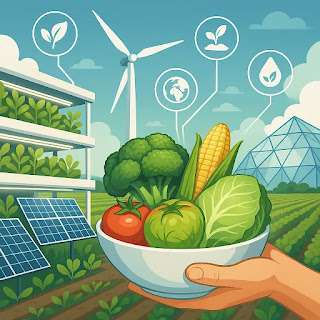The main culprit raising Earth's temperature: greenhouse gases!
To effectively reduce them, we need to know exactly where and how much of these gases are being emitted.
International efforts like the Paris Agreement, which you might be familiar with, begin precisely with this emission calculation.
In this blog post, we'll tell you everything you need to know about "Greenhouse Gas Emissions: How They're Measured and Their Sources." What standards and methods lie behind the good news that South Korea's greenhouse gas emissions decreased by 2.3% in 2022 compared to the previous year? Let's find out together!
1. Why Do We Need to Calculate Greenhouse Gas Emissions?
Calculating greenhouse gas emissions is the first step in combating climate change.
Just as we get regular check-ups to understand our body's health, we need to accurately grasp the status of greenhouse gas emissions for the Earth's well-being.
This data forms the basis for national policy-making, sets standards for corporate carbon reduction efforts, and ultimately provides the foundation for international cooperation to prevent global warming.
All parties to the UN Framework Convention on Climate Change are required to submit their national greenhouse gas emission statistics to the UN, applying the new international standard: the 2006 IPCC Guidelines for National Greenhouse Gas Inventories (2006 IPCC Guidelines).
This is not just about reporting; it's a crucial process that encourages countries to take responsible climate action.
2. Where Do Greenhouse Gases Come From? (Industries Included in Calculation)
Greenhouse gases are generated in various industrial sectors closely linked to our daily lives. Let's look at the main sources of emissions by category.
Energy Sector:
The Lifeblood of Industry, Fuel Consumption
Stationary Combustion:
Emissions occur when solid fuels, natural gas, or liquid fuels are burned in power plants, factories, and other facilities to produce energy.
The electricity and heat we use originate here.
Mobile Combustion:
Greenhouse gases are released when fuel is burned in all modes of transport, including cars, airplanes, ships, and trains. Emissions occur every time we move.
Petroleum Refining:
Even in the process of refining crude oil into gasoline, diesel, and other products, greenhouse gases are emitted from various processes such as hydrogen production, catalyst regeneration, and coke manufacturing.
Industrial Processes & Product Use:
Emissions within Production
Mineral Industry:
Greenhouse gases are emitted from chemical reactions during the production of cement, lime, and glass, or from the use of carbonates.
The cement industry, in particular, is a major source of carbon dioxide.
Chemical Industry:
Greenhouse gases are generated during the production of various chemical products such as ammonia, nitric acid, and adipic acid.
Certain substances like fluorinated compounds have very high global warming potentials.
Metal Industry:
In the smelting and production of metals like iron, ferroalloys, zinc, lead, and magnesium, significant energy is consumed, and specific reactions lead to greenhouse gas emissions.
Electronics Industry:
Certain gases (e.g., fluorinated compounds) used in the production of semiconductors, LCDs, and PV (photovoltaics), as well as heat transfer fluids, act as sources of greenhouse gas emissions.
Other Sources:
Not to Be Overlooked
Waste Treatment:
Greenhouse gases are emitted from waste treatment processes, such as methane gas (CH4) from solid waste landfills and carbon dioxide from waste incineration.
Wastewater treatment also significantly contributes to methane and nitrous oxide (N2O) emissions.
Fugitive Emissions:
These refer to gases, such as methane, that are unintentionally released into the atmosphere during the production and transport of coal, oil, and natural gas.
ODS Substitutes:
Some substances used to replace ozone-depleting substances (ODS) in the past (e.g., HFCs) are powerful greenhouse gases.
External Electricity and Heat Use:
Even if fuels are not burned directly, the use of externally supplied electricity or heat includes the greenhouse gas emissions generated from their energy source.
Other:
Various activities, including the shipbuilding industry, fuel cells, and emissions related to carbon capture and storage (CCUS), can also be included in greenhouse gas calculations.













.jfif)











.jfif)
.jfif)
















